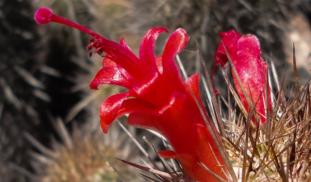Please wait...
About This Project
I am developing and applying innovative population genetics data analysis with habitat suitability modeling to solve longstanding challenges in the effort to save endangered plant species. Combining high throughput RADseq data analysis with species distribution models, I am exploring relatively inexpensive, feasible methods to generate powerful population viability assessments, estimates of threshold population size and the constraints on the habitats of rare plants.
More Lab Notes From This Project

Browse Other Projects on Experiment
Related Projects
Using eDNA to examine protected California species in streams at Hastings Reserve
Hastings Reserve is home to three streams that provide critical habitat for sensitive native species. Through...
City smart: Are cities making birds smarter?
One cannot go to Florida and miss the White Ibises roaming golf, park and private lawns. But how does a...
How do polar bears stay healthy on the world's worst diet?
Polar bears survive almost entirely on seal fat. Yet unlike humans who eat high-fat diets, polar bears never...



